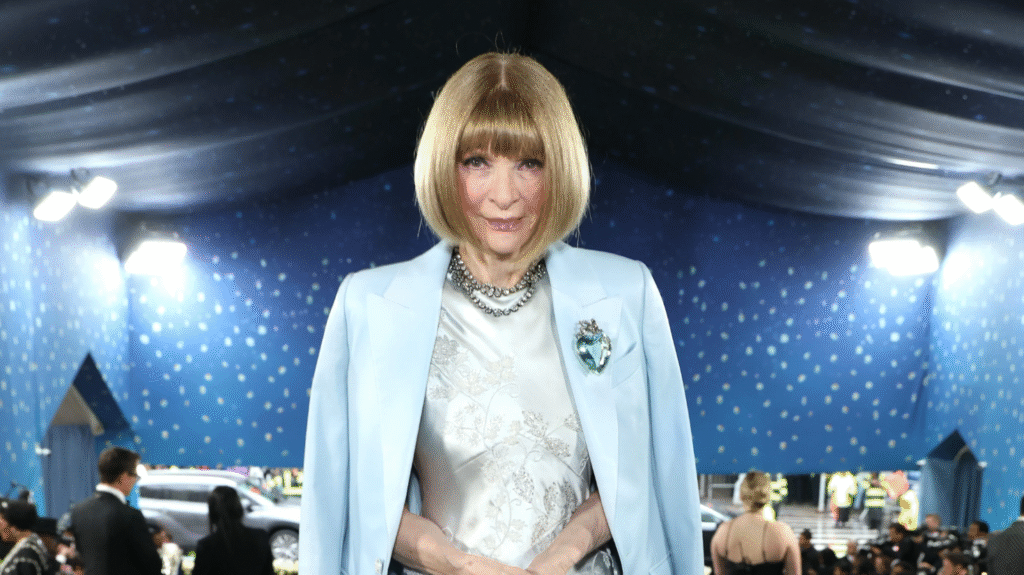After nearly four decades of steering American Vogue into the global fashion spotlight, Anna Wintour, the iconic editor-in-chief, has announced her departure from the role. At the age of 75, Wintour revealed her decision on June 25, 2025, during a staff meeting at Condé Nast. While her tenure as editor-in-chief is coming to an end, her influence will continue as she transitions to a new role within the company. Wintour will remain at Condé Nast as global chief content officer and Vogue’s global editorial director, ensuring her legacy persists at the heart of the fashion world.
A Revolutionary Leader in Fashion Media
Wintour’s departure marks the end of an era that began in 1988 when she took over as the editor of Vogue. Her leadership reshaped not only the magazine but the entire fashion industry. Under her guidance, Vogue became much more than just a fashion publication; it became a cultural institution. Wintour’s vision for blending fashion, celebrity, and politics created a multimedia powerhouse that extended beyond magazine covers into film, television, and digital platforms.
Her first iconic move was the now-famous November 1988 cover featuring Israeli model Michaela Bercu. In this cover shoot, Bercu wore a $50 pair of jeans alongside a $10,000 Christian Lacroix sweater, a combination that was nothing short of revolutionary. This break from the traditional elegance of the magazine’s covers symbolized a dramatic shift in Wintour’s editorial vision. In her own words, Wintour described the shoot as “breaking all the rules,” and it was a sentiment that defined much of her career.
Wintour’s ability to push boundaries and break from tradition became a cornerstone of her leadership style. Under her reign, Vogue expanded its focus to not just supermodels, but a diverse range of people, including Hollywood stars, athletes, and even political figures. She turned the magazine into a major platform for cultural discourse, highlighting issues of race, gender, and social justice, while also elevating the commercial appeal of the brand.
Financial Power and Influence
Anna Wintour’s net worth is estimated to be a staggering $50 million, according to Celebrity Net Worth, which underscores the financial impact of her work in the fashion industry. As editor-in-chief of Vogue, Wintour earned an annual salary of $4 million. However, her role at Condé Nast, where she has been global chief content officer since 2020 and artistic director since 2013, significantly boosted her earnings. These positions allowed her to oversee content across all of Condé Nast’s flagship publications, amplifying her power and reach across the media landscape.
Wintour’s financial success is not just a reflection of her work at Vogue but also her ability to innovate within a rapidly evolving media environment. She transformed Vogue into a business powerhouse, attracting advertising revenue, partnerships, and a global readership that continues to set industry standards.
A Pop Culture Icon
Wintour’s influence extended far beyond the pages of Vogue. Her persona, defined by her sharp wit, discerning eye for style, and unwavering authority, became a touchstone of popular culture. The character of Miranda Priestly in the 2006 film The Devil Wears Prada, portrayed by Meryl Streep, is widely believed to have been inspired by Wintour. Though author Lauren Weisberger, who wrote the book, has denied a one-to-one comparison, the connection between Wintour and Priestly has become part of the cultural mythos. Wintour, in her typically playful manner, leaned into the association, even attending the film’s premiere in a head-to-toe Prada ensemble, adding fuel to the speculation.
In addition to her connection to The Devil Wears Prada, Wintour’s impact on the entertainment world is undeniable. She has cultivated relationships with the biggest names in Hollywood, fashion, and politics, and has appeared in films, documentaries, and television shows, further cementing her status as a cultural figurehead. Wintour’s ability to effortlessly blend fashion with pop culture ensured her position as a powerful force within the broader media landscape.
The End of an Era, But Not Her Influence
As Anna Wintour steps down from her role as editor-in-chief, her legacy remains deeply ingrained in the fabric of the fashion industry. She leaves behind a publication that is not just influential in terms of fashion trends but also as a voice that shapes conversations around art, culture, and identity. Vogue’s global reach and authority are in no small part thanks to Wintour’s visionary leadership, which turned the magazine into a true institution.
Although Wintour is no longer leading the editorial direction of American Vogue, she will continue to exert immense influence at Condé Nast. As global chief content officer and Vogue’s global editorial director, she will retain the power to shape the content and direction of one of the most powerful brands in the fashion world. It’s a role that will allow her to guide the company’s vision, overseeing not just print but also digital and multimedia content, ensuring that her legacy continues to shape the industry for years to come.
A Fashion Empire Built on Vision and Reinvention
Anna Wintour’s resignation marks the end of a remarkable chapter in the history of fashion journalism. But it is far from the end of her career or influence. As a visionary leader, Wintour not only revolutionized American Vogue but also redefined the relationship between fashion, celebrity, and popular culture. Her pioneering editorial decisions, financial acumen, and cultural influence have left an indelible mark on the world of fashion.
For nearly 40 years, Anna Wintour has been the embodiment of authority, style, and reinvention. As she transitions to a new role at Condé Nast, her influence will continue to be felt, ensuring that her legacy as one of the most powerful figures in fashion history endures.

